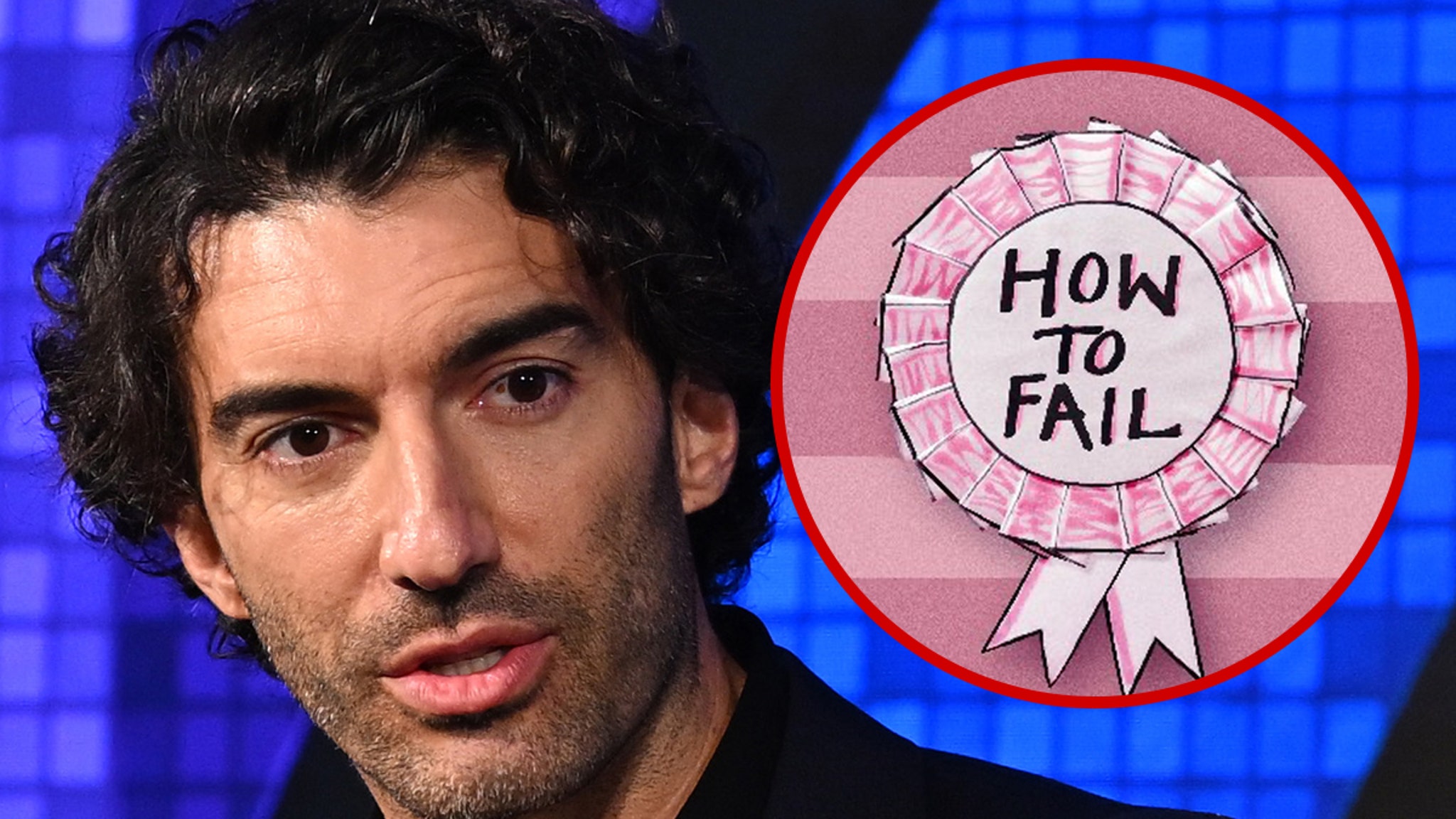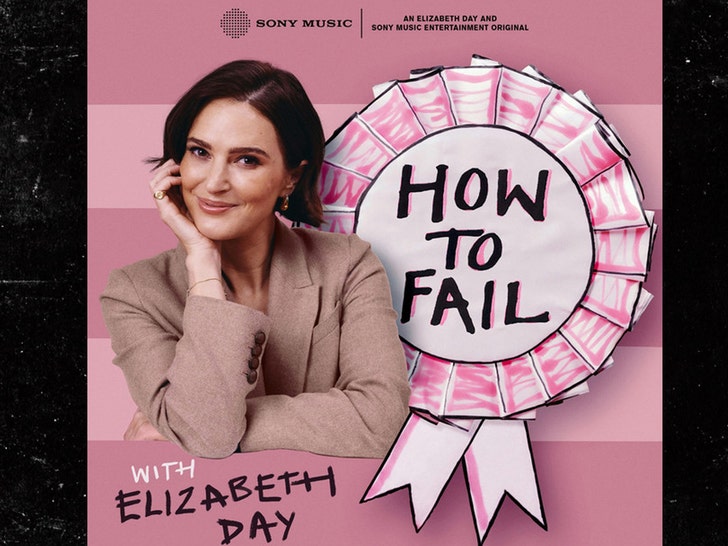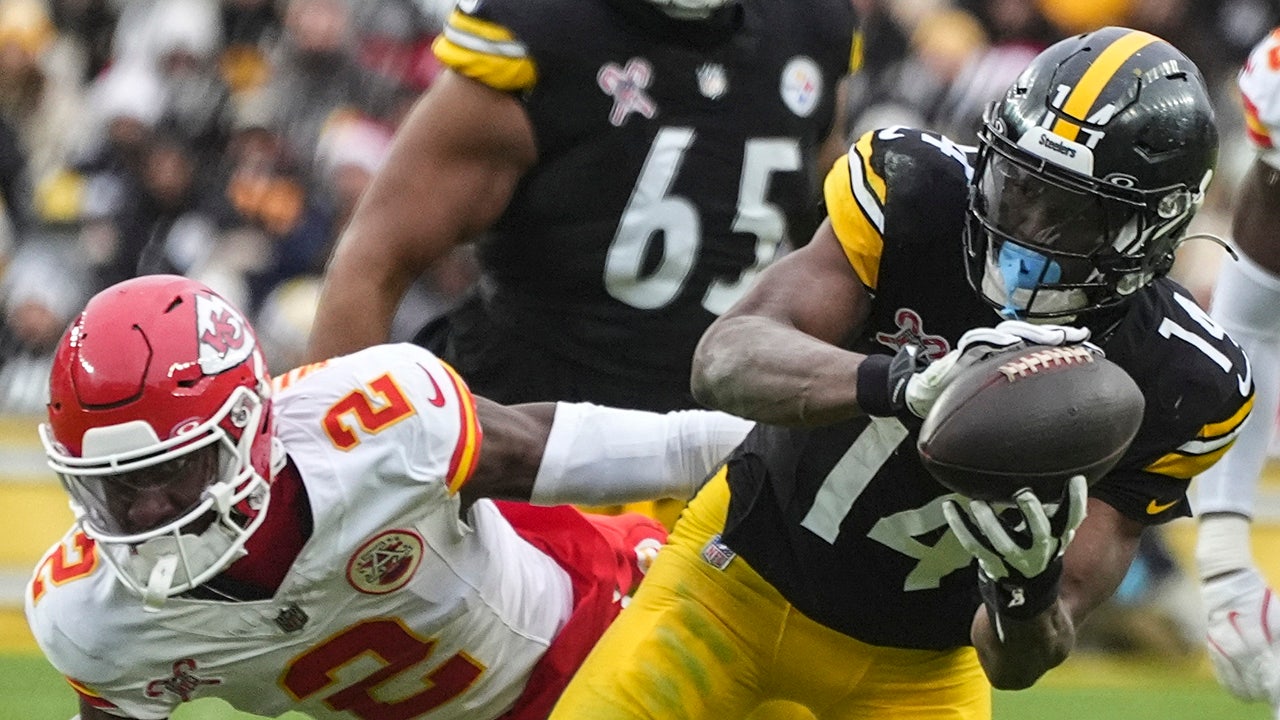Lifestyle
Photographer David Johnson, who chronicled San Francisco's Black culture, dies at 97

“Boy and Lincoln, 1963” by David Johnson.
The David Johnson Photograph Archive, The Bancroft Library, University of California, Berkeley
hide caption
toggle caption
The David Johnson Photograph Archive, The Bancroft Library, University of California, Berkeley

“Boy and Lincoln, 1963” by David Johnson.
The David Johnson Photograph Archive, The Bancroft Library, University of California, Berkeley
David Johnson generally wasn’t interested in people posing for his camera.
As the photographer and civil rights activist put it in a 2017 interview at the University of California, Berkeley: “A big smiling photograph? That wasn’t my style.”
Johnson died at his home in Greenbrae, north of San Francisco, earlier this month. According to his stepdaughter, he was suffering from advanced dementia and had pneumonia. He was 97 years old.
Johnson was the first Black student of the famous nature photographer Ansel Adams and became known as one of the foremost chroniclers of San Francisco’s Black urban culture.
In one of his most famous images, shot early in his career in 1946, Johnson depicts a street corner in San Francisco’s Fillmore District — once a hub for the city’s thriving Black community until redevelopment later in the century forced nearly all of them out.

“Looking South on Fillmore, 1946,” by David Johnson.
The David Johnson Photograph Archive, The Bancroft Library, University of California, Berkeley
hide caption
toggle caption
The David Johnson Photograph Archive, The Bancroft Library, University of California, Berkeley

“Looking South on Fillmore, 1946,” by David Johnson.
The David Johnson Photograph Archive, The Bancroft Library, University of California, Berkeley
The image has energetic angles and stark contrasts of light and shadow. And it’s shot from above. In the UC Berkeley interview, Johnson said he clambered up four stories on a nearby construction scaffold to get it.
“I focused my camera and took one photograph,” Johnson said. “I was kind of anxious to get this little job over with and go back down to the ground.”
A tough childhood
Johnson was born in 1926 in Jacksonville, Fla., to an impoverished single mother who handed her baby off to be raised by a cousin.
In a 2013 interview with San Francisco member station KQED, Johnson said he got his first camera by selling magazine subscriptions door-to-door.
“I just started snapping pictures around the neighborhood. And I got kind of fascinated with that,” he said.

David Johnson in 2023 with one of his photographs, “Clarence,” at an award luncheon at UC Berkeley honoring the photographer.
Peg Skorpinski
hide caption
toggle caption
Peg Skorpinski

David Johnson in 2023 with one of his photographs, “Clarence,” at an award luncheon at UC Berkeley honoring the photographer.
Peg Skorpinski
Johnson was drafted into the U.S. Navy right out of high school. He was stationed in San Francisco, falling in love with the city, and was then sent to the Philippines for the remainder of World War II. After returning, he wanted to develop his photography skills in college.
It was 1946, and budding photographers were clamoring to get into the program that master lensman Adams had just launched at the California School of Fine Arts in San Francisco. Its star-studded faculty included Minor White, Imogen Cunningham, Edward Weston and Dorothea Lange.
San Francisco-bound
Johnson wanted in. So he sent Adams a letter.
“I wrote to Ansel and said, ‘I’m interested in studying photography. I have the GI Bill. And I would like for you to evaluate my [application].’ Ansel wrote me back and said, ‘There are no vacancies in the class,’ ” he told KQED.
But a student dropped out, making room for Johnson.
He hopped on a segregated train that took him from Jacksonville to San Francisco. After living in Adams’ house for a while, he eventually found a low-rent room in the city’s Fillmore District and started taking lots of photos.

“Eartha Kitt with Neighborhood Children, 1947,” by David Johnson.
The David Johnson Photograph Archive, The Bancroft Library, University of California, Berkeley
hide caption
toggle caption
The David Johnson Photograph Archive, The Bancroft Library, University of California, Berkeley

“Eartha Kitt with Neighborhood Children, 1947,” by David Johnson.
The David Johnson Photograph Archive, The Bancroft Library, University of California, Berkeley
Many of these images appeared decades later in a KQED documentary about the Fillmore’s status — and eventual demise — as one of the country’s most vibrant Black neighborhoods.
“He would go to the clubs in the evenings, take incredible photographs of musicians,” said Christine Hult-Lewis, the pictorial curator of special collections at UC Berkeley’s Bancroft Library, which houses the David Johnson archive. “He had very easy relationships with people in the barbershops and the folks in the churches and folks on the streets.”
Johnson said his college instructors encouraged these pursuits.
“Growing up, most of the photographs I have seen of Black people were just not very complimentary,” he told KQED. “I said, ‘My photographs will have Black people photographed in a dignified manner.’ “
Documenting street life, famous figures and civil rights
Hult-Lewis said that as a freelance press photographer, Johnson took candid photos of Black celebrities who came to town, such as Nat King Cole, Paul Robeson and Langston Hughes.

“Nat King Cole at Fairmont Hotel, 1949,” by David Johnson.
The David Johnson Photograph Archive, The Bancroft Library, University of California, Berkeley
hide caption
toggle caption
The David Johnson Photograph Archive, The Bancroft Library, University of California, Berkeley

“Nat King Cole at Fairmont Hotel, 1949,” by David Johnson.
The David Johnson Photograph Archive, The Bancroft Library, University of California, Berkeley
And he used his camera to spark conversations about civil rights.
“There’s one really iconic photograph of a woman listening to a speech and she’s got kind of a dubious look on her face, but in her glasses are reflected the American flag,” Hult-Lewis said. “There’s another incredible photograph of a young African American boy sitting, holding an American flag in the embrace of a sculpture of Abraham Lincoln.”
Johnson also often participated in direct political action. He attended the 1963 March on Washington, and organized the first Black caucus at the University of California, San Francisco.

“Reflections in Glasses, 1963,” by David Johnson.
The David Johnson Photograph Archive, The Bancroft Library, University of California, Berkeley
hide caption
toggle caption
The David Johnson Photograph Archive, The Bancroft Library, University of California, Berkeley

“Reflections in Glasses, 1963,” by David Johnson.
The David Johnson Photograph Archive, The Bancroft Library, University of California, Berkeley
“He was part of a group that successfully sued the San Francisco Unified School District to compel them to more fully desegregate the schools,” Hult-Lewis said.
Johnson never became a big name like his teacher Adams. By the 1980s he’d stopped taking photos altogether.
But interest in Johnson’s work has grown in recent years, as cities across the country grapple with the negative impacts that urban redevelopment can have. His work is in the collection of major institutions including the San Francisco Museum of Modern Art, and was the subject of a solo exhibition at San Francisco City Hall in 2022.
“The photographs tell life, life as it was then, life that cannot be duplicated or recreated in today,” Johnson’s wife, Jacqueline Sue, told KQED in 2013. “It’s a marker of history.”

Lifestyle
The 'Beyoncé Bowl' halftime show was a massive hit for Netflix. The football was too

Beyoncé performed live at halftime during the NFL game between the Baltimore Ravens and Houston Texans at NRG Stadium on Dec. 25, 2024.
Julian Dakdouk
hide caption
toggle caption
Julian Dakdouk
Sports fans who tuned into Netflix’s landmark streaming Wednesday of two NFL games may have felt a bit of troubling déjà vu – at first.
That’s because this crucial event – signaling the entry of the industry’s largest streaming service into the blockbuster business of professional football – kicked off with audio problems in the early moments of host Kay Adams’ opening presentation.
It was a worrying callback to problems Netflix had with its last big live event, the boxing match in November between YouTube star Jake Paul and former champ Mike Tyson when viewers struggled with blurry audio and got regularly kicked off the live stream.
Fortunately, Adams’ sound problems were quickly fixed, allowing Netflix to step up with a two-game programming event that felt like the streaming service’s version of the Super Bowl – complete with a lushly-produced halftime show for its second game featuring pop superstar Beyoncé that could stand up to any Big Game presentation.
In fact, the actual football games may have been the least impressive part of Netflix’s big day, as Super Bowl champions the Kansas City Chiefs ran over the Pittsburgh Steelers in the first game, 29-10 and the Baltimore Ravens dominated the Houston Texans on their home turf for the second contest, 31-2.

Netflix’s broadcast on Wednesday got off to a rocky start with audio problems from host Kay Adams.
Netflix
hide caption
toggle caption
Netflix
Stacking its teams of hosts and commentators with experienced broadcasters, Netflix delivered a mostly smooth visual presentation with lots of glitzy graphics and all the information fans needed to follow the game. The connection issues that plagued the Tyson/Paul fight seemed largely absent, at least for this viewer, particularly while watching the games in slightly delayed playback.
According to Netflix, more than 200 countries tuned in at some point during the Chiefs vs. Steelers contest, making it the second most popular live title on the streaming service.
So, it makes sense the streamer would take advantage of the occasion to shoehorn in lots of references to other Netflix products, including a pregame interview with WWE wrestler Liv Morgan to prompt the debut of WWE Raw live events next month and realistic-looking football-shaped cakes tying into the streamer’s game show Is It Cake?
There were also loads of commercials, which seemed to play even for subscribers with ad-free plans, though if you watched the games via replay, you could skip past them.
But the full games expired from Netflix three hours after the event; two programs offering highlights from each game’s plays are available to watch on demand, and the streamer says Beyoncé’s halftime show will also be offered as a standalone program to rewatch.
Queen Bey, a Houston native, certainly brought the fire to her hometown for what the streamer dubbed the “Beyoncé Bowl” halftime show. Performing songs from her album Cowboy Carter for the first time – including her reboots of “Jolene” and “Blackbird” – she was a vision in white and sequins backed by a cavalcade of dancers decked out in white cowboy hats and ace collaborators like Post Malone and Shaboozey. Her daughter, Blue Ivy, even made an appearance.
Beyoncé’s epic live performance lasted more than 13 minutes – handily overshadowing Mariah Carey’s pre-taped appearances before each game – also proving that Netflix could muster the production value and imagery to match any Super Bowl-level performer.
YouTube
Which was, ultimately, the most important point of the entire day – proving that the streaming service is ready to compete with the big dogs of broadcasting by offering glitch-free NFL games live to a subscriber base of more than 282 million accounts.
Netflix isn’t the only streamer offering live NFL games. Amazon’s Prime Video has Thursday Night Football and Peacock also offers live coverage of some NFL games. But Netflix, as the largest and most profitable streaming service, has a symbolic and substantial impact when it comes to a certain kind of programming.
With its plans to stream WWE Raw live events starting next month and a new deal to present the FIFA Women’s World Cup, Netflix is turning toward one area of television streaming services haven’t yet dominated: live sports.
What that ultimately means for the future of television – and the future of sports media – we may just be starting to learn.
Lifestyle
Podcaster Takes Down Justin Baldoni Episode Amid Blake Lively Legal War

Justin Baldoni has suffered another blow amid his legal war with Blake Lively … a podcaster who recently interviewed him has removed his episode.
Elizabeth Day, who hosts the ‘How To Fail’ podcast, shared an IG statement Tuesday, explaining she had taken down the December 4 interview with Baldoni while all the “distressing allegations made against him in Blake Lively’s recent lawsuit are fully investigated.”
Waiting for your permission to load the Instagram Media.
Elizabeth spoke of Baldoni’s legal matter in general … saying she believes every individual has a right to a safe workplace, and every woman should have dignity in that workplace.

She wrapped up the post, saying that every form of abuse should be called out, and she salutes anyone with the the courage who does.
Baldoni’s podcast interview with Elizabeth was in-depth and personal — he spoke about his ADHD diagnosis at age 40 and also spoke of a “near breakdown” on the set of “It Ends With Us,” which he directed and starred in alongside Blake.

Looks like a lot went down BTS of the film, ’cause Blake’s filed a sexual harassment and smear campaign lawsuit against him, in what she claims is a coordinated effort to destroy her reputation. Baldoni has denied all the claims.
Lifestyle
How to navigate gift returns and regifting this holiday season

Shoppers walk along Fifth Avenue on Nov. 29 in New York City.
Heather Khalifa/AP
hide caption
toggle caption
Heather Khalifa/AP
If you’re feeling guilty for thinking about returning that unironically ugly sweater your least favorite aunt gave you this holiday season, maybe don’t. ‘Tis the season of giving — and returning, after all.
The National Retail Federation reports that returns will total $890 billion for all of 2024. Returns happen year-round, but are most prevalent during the holiday season, the organization said.
But etiquette experts caution there is a delicate art to returning, or even regifting, the presents you receive.
“When it comes to returning a gift, I think discretion is key so you never hurt the gift giver,” said Myka Meier, an etiquette expert who runs Beaumont Etiquette in New York City.
There are some things to consider before heading to the store to make a return, according to Jo Bryant, a British etiquette consultant.
“The best way to return an unwanted gift is to really examine the financial worth, and relationship with the giver. It always involves a tricky conversation, so it is best to prioritise this for more expensive gifts when it really would be [a] shame that you can’t use it, and a real waste,” Bryant wrote in an email to NPR. “You also need to know the person who gave you the gift very well to be so honest with them.”

People walk past shops on Dec. 11 in Philadelphia.
Matt Slocum/AP
hide caption
toggle caption
Matt Slocum/AP
Keep quiet and return
For Meier, it’s all about discretion when it comes to returning a gift.
She and Bryant differ on whether plans for returns should be shared with the gift giver.

Meier said don’t say anything “unless they specifically ask,” she said. “For most situations, it’s better to simply thank them graciously for their thoughtfulness without mentioning the return. The focus should always be on appreciating the gesture of being given a gift, not the item itself.”
And maybe keep mum even after some time has passed, she recommends.
“I would still try to avoid ever bringing it up, but I also would not lie,” she said.

So, if that aunt who bought that ugly sweater asks how it fits two months after Christmas?
“In that case, you can kindly and tactfully explain, for instance: ‘It was such a thoughtful gift! Unfortunately, it didn’t fit quite right, so I exchanged it for something similar that I’ll use every day and always think of you!’ “

A shopper carries a Christmas-themed bag in London on Dec. 2, 2020.
Alberto Pezzali/AP
hide caption
toggle caption
Alberto Pezzali/AP
But maybe direct honesty is more your style?
Bryant believes “honesty and tact is best.” Regardless, be sure to flatter the gift giver and heap praise on the present at the same time.
If something absolutely must be returned, instead of saying that you just didn’t like the present, give a reason for the return that is out of your control, Bryant said.
She suggested saying something like, ” ‘I loved the cashmere jumper — it is one of my favourite presents this year — but I think the size up would be more comfortable for me,’ or ‘Thank you for the crystal glass vase; we love it but my mother recently gave us one very similar. I really don’t want such a generous gift to be wasted, so I’d love it if we could look to choose something else together? You always get us the best presents and we are so lucky to get such amazing and thoughtful gift from you.’ “
To save on possible awkwardness with these kinds of exchanges, Bryant suggested that gift givers be proactive and include the gift receipt, when possible.
What are the rules on regifting?
Yes, regifting is allowable, under etiquette rules.
“But it should be done thoughtfully and carefully,” Meier said.
There are limits to what can be regifted. “If the gift was customized in any way or has sentimental meaning, it’s not something to regift,” she said.
She addresses this topic further in a post on Instagram.
Some things Meier recommends if you plan on sending that previously discussed hideous sweater to a new home:
- Make sure the gift is new, totally unused and in its original packaging
- Avoid giving this gift to someone in the same social circles. In other words: Don’t give the sweater your aunt gave you to your cousin.
- Rewrap the gift “to show effort and care, just as you would with a newly purchased gift!”

-
/cdn.vox-cdn.com/uploads/chorus_asset/file/24924653/236780_Google_AntiTrust_Trial_Custom_Art_CVirginia__0003_1.png)
/cdn.vox-cdn.com/uploads/chorus_asset/file/24924653/236780_Google_AntiTrust_Trial_Custom_Art_CVirginia__0003_1.png) Technology5 days ago
Technology5 days agoGoogle’s counteroffer to the government trying to break it up is unbundling Android apps
-

 News6 days ago
News6 days agoNovo Nordisk shares tumble as weight-loss drug trial data disappoints
-

 Politics6 days ago
Politics6 days agoIllegal immigrant sexually abused child in the U.S. after being removed from the country five times
-

 Entertainment1 week ago
Entertainment1 week ago'It's a little holiday gift': Inside the Weeknd's free Santa Monica show for his biggest fans
-

 Lifestyle7 days ago
Lifestyle7 days agoThink you can't dance? Get up and try these tips in our comic. We dare you!
-
/cdn.vox-cdn.com/uploads/chorus_asset/file/25672934/Metaphor_Key_Art_Horizontal.png)
/cdn.vox-cdn.com/uploads/chorus_asset/file/25672934/Metaphor_Key_Art_Horizontal.png) Technology2 days ago
Technology2 days agoThere’s a reason Metaphor: ReFantanzio’s battle music sounds as cool as it does
-

 Technology1 week ago
Technology1 week agoFox News AI Newsletter: OpenAI responds to Elon Musk's lawsuit
-

 News3 days ago
News3 days agoFrance’s new premier selects Eric Lombard as finance minister
/cdn.vox-cdn.com/uploads/chorus_asset/file/24182143/226402_Android_Smartwatch_Buyers_Guide_WJoel.jpg)












